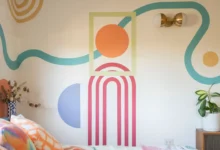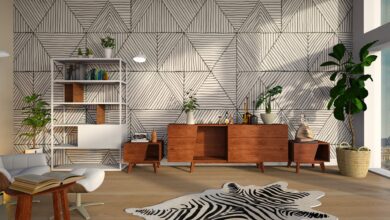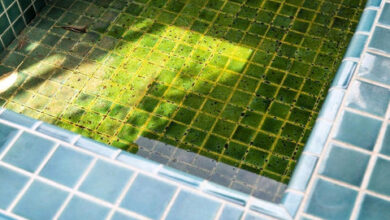
A Helpful Guide to Designing a Kitchen You’ll Love
Did you know that over 127 million households in the United States have complete kitchen facilities? For many, kitchens are more than just an area to make food.
They’re a gathering place — a central location that’s the nucleus of any household. That’s why people so much time designing the perfect kitchen. If you’re in the process of a kitchen design or redesign, you’re likely feeling overwhelmed.
Luckily, you’re in the right place. In this guide, we’ll go over everything you need to know about designing a kitchen. That way, you can get the kitchen of your dreams without hurting your mental health. Let’s dive in.
Table of Contents
List the Kitchen Elements You Want
The first thing you need to do is assemble all the kitchen elements that you want for your design. It helps to make a list, giving each element you want a priority level. High-priority elements are non-negotiable musts.
Lower priority ones can be cut if it’s not feasible to add them. Do you desperately want a beautiful kitchen island? Or are appliances and cabinets higher priorities?
These are all questions you should be asking yourself. In addition, you should be asking yourself what currently works in your kitchen. If you want to redesign the whole thing from scratch, that’s fine.
Just keep in mind that this will be a lot more expensive. If you keep certain parts from your old kitchen, it can help you save a lot of money on the improvements.
Set a Budget
After you list all the elements you want in your kitchen layout, it’s time to get practical. That means setting a maximum budget that you can afford to spend on your new kitchen.
This is important because it will dictate what kitchen ideas you have money for and which ones you need to wait for. Some kitchen elements, like new appliances, will be easy to calculate.
Others, like cabinet, floor, and countertop contractors, will be harder to figure out. Do your best to get estimates, and always leave some wiggle room in your budget for contractor work.
If the project encounters unexpected challenges, it can increase the overall price. If you calculate your budget and you don’t have the funds to do everything you want, you can consider alternative forms of financing.
There are plenty of loans geared exclusively toward people tackling home improvement projects. So, if you don’t mind taking out money, you might want to look into these options.
Think About How People Will Walk Through the Space
When most people design a kitchen for the first time, they pay more attention to their counters and appliances than walk space. This is a problem because most kitchens receive a lot of traffic from the people living in the house.
If the traffic flow is messed up, it can cause people to bump into each other while cooking or entering/leaving the space. One thing you can do to prevent this is to create wide walkways.
The paths in your kitchen should be at least thirty-six inches and larger if you expect multiple people to cook. You should also consider elements like these louvered doors.
They make it easy for people to bring food in and out of the kitchen without using their hands.
Lastly, always ensure that your refrigerator can be accessed by people who are cooking and people just passing through. This will go a long way toward reducing kitchen accidents.
Decide On Counterspace and Material
Next, it’s time to decide on counter space set-up. Many kitchen designs bring an island counter in the center of the kitchen. This central element not only gives you something to gather around, but it can also improve work and traffic flow.
Once you decide where your counters will go, you must select materials. Some popular counter materials include things like:
- Quartz
- Marble
- Timber or wood
- Granite
- Solid service
- Porcelain
Your proper counter material will depend on your personal preferences and budget. If your budget is stretched thin, marble might not be your best option, even if it would look great.
The good news is that plenty of affordable options mimic the look.
Consider Design and Colors
Some people want a cozy, country kitchen that reminds them of their parent’s home. Others want a stark, modern design with straight lines and clean spaces.
Deciding on a design early on will help you rest of your renovation immensely. It will also help you pick the perfect color and furniture for your kitchen.
Also, if one specific design isn’t speaking to you, don’t be afraid to combine elements. It might not land your kitchen in a home design magazine, but it’s a great way to make the space uniquely yours.
Hire Contractors
Remember that it doesn’t matter how much planning you put into your kitchen design. If you choose a subpar contractor, there’s a good chance it will come out looking nothing like you expected it.
So, spend some time researching before you select one. If you can ask around your network for recommendations. Odds are someone you know has done a kitchen redesign as well.
Or, you can just do a quick internet search. Once you have a list of options, bring some of them in for a consultation. Pay attention to their recommendations and whether or not they listen to you.
The best contractors will provide you with their professional opinions while staying as true as possible to your design.
Appreciate Learning About Designing a Kitchen? Keep Exploring
We hope this guide helped you learn more about designing a kitchen. Whether it’s your first time or you’re a veteran, settling on the perfect kitchen design can be a challenge.
The most important thing is to stay organized. This will help ensure that you get exactly what you want out of the design while compromising on the less important aspects.
Enjoy learning about this home renovation subject? We have dozens of similar topics on our website so keep exploring to find them all.








